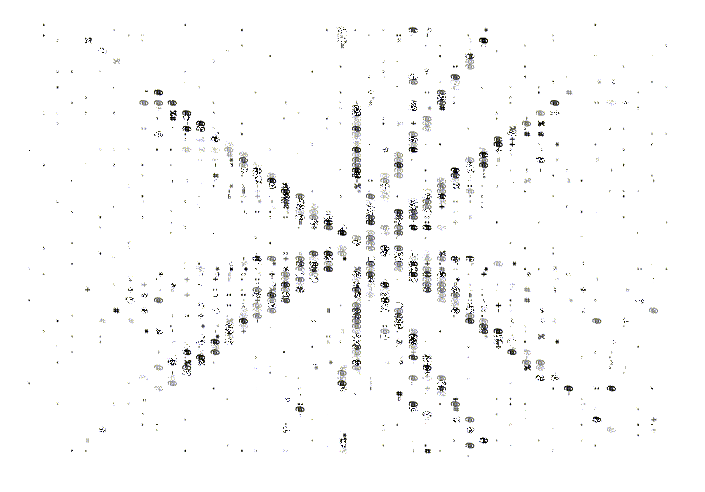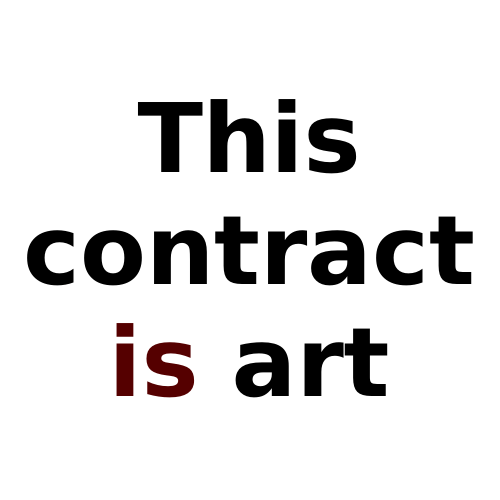
Art, Technology, and Collective Storytelling in the Blockchain Era
Last October, amidst a diverse assembly of artists and thinkers, I took part in an event hosted by Wild in New Orleans. As an artist immersed in the realm of blockchain and smart contract art, the experience was both a great party and social gathering, and a fertile ground for enhancing my ideas on decentralized tools and NFTs in particular.
Wild is a platform celebrating art and creativity in the digital age. Their primary objectives are to empower artists with tools for growth, to provide space for creativity, and to introduce their art to a wider audience. The online residency took place over the summer and concluded with an invitation to attend WILD x NOLA, a three-day event organized for the artists involved in the residency to gather in-person. It helped foster a sense of community that could incubate novel ideas and projects. Beyond a tool for marketing or creating cultural capital, such events help build genuine connections. Despite this experience in New Orleans and the excitement surrounding the opportunities blockchains offer to artists, I find that misconceptions about NFTs still persist.
“NFTs are worthless!” This statement, frequently used as a click-bait headline, casually dismisses the possibilities enabled by distributed databases such as blockchains. Beyond proving the ‘bullshit asymmetry principle’ otherwise known as Brandolini’s Law, such statements show a definitive lack of nuance and serve as a reminder of the bias towards decentralized technologies. As an artist committed to research and exploration, my curiosity tends to lead me towards the potentialities opened up by a specific medium. I see NFTs as one tool among many that can explore the social, financial, and technical possibilities of blockchains, offering a unique avenue for creativity.
Among the innovative NFT projects that caught my attention last year was the Blackhole, a minimal yet profound smart contract art piece. In essence, it’s a digital representation of a black hole where participants can interact by minting or burning NFTs, affecting its state and the cost of future interactions. Each action directly influences the Blackhole’s lifecycle, echoing the unpredictable and dynamic nature of its cosmic namesake.

Fascinated by this project, I ventured to create the Hawking Radiation, a smart contract enabling a collective approach to interacting with the Blackhole. This initiative allowed participants to burn their tokens via the Hawking Radiation mechanism, turning the individualistic experience into a shared mission. The goal was to socialize the experiment, fostering a community-driven effort to “play” the Blackhole in a cooperative mode. This shift not only added a layer of social dynamics to the experience but also highlighted the potential of blockchain for creating collaborative and collective art experiences. This spirit of collaboration and innovation was one that was amplified at WILD x NOLA, where artists and curators converged to reimagine the future of digital art on chain. The event brought together brilliant minds that creatively shape the art & blockchain ecosystem. I witnessed spontaneous exchanges, collaborations, and a deep dive into the creative possibilities of digital art. The event was a testament to Wild’s mission of magnifying art and building uncharted worlds.
Ursula K. Le Guin has always been an influence and inspiration for building new realms. In particular, via her “Carrier Bag Theory of Fiction,” which views stories as vessels for collective human experiences, I’ve been exploring smart contracts as modern “carrier bags.” These are the digital narratives and artistic expressions that hold the potential to shape new worlds and experiences — a concept I have been developing throughout different projects.
One of these NFT-based projects is Infinite Canvas, a collective experiment made of an ever expanding array of colours. This artwork on Ethereum is an artistic statement that highlights the collaborative spirit of onchain permisionessless. Here’s how it works:
- Anyone can mint a token
- Each token buyer chooses its token’s colour
- Owners have the freedom to change the colour of their token as often as they wish.
- Collectively, these tokens form an infinite canvas.
This project with its unlimited supply, allows for an ever-evolving artwork where the community actively participates in its creation. Think r/place meets the Million Token Website but with an added infinity factor.

At Wild, our discussions relating to the Infinite Canvas went beyond just its mechanics. We delved into ways of empowering token holders to decide on the layout of the canvas online. Imagine that collection of NFTs, each token becoming a pixel on the canvas. These tokens can be laid out in a multitude of arrangements, allowing the canvas to come together in diverse and imaginative ways. It’s a dynamic interplay between individual creativity and collective vision. This constitutes an evolving colour-based collaboration.
The success of the WILD x NOLA event came from the amazing variety of topics covered, ranging from a performative showcase of aesthetic.computer to a workshop on how to prepare work for collectors. From the playfulness of a whistlegraph to the technicalities of institutional archiving, I navigated the different sessions with increasing enthusiasm. On our final night, a marching band walked us to our final venue to everyone’s surprise. Navigating through such a diverse landscape of ideas, I was inspired to define a new concept in digital art that I call “Boolean Art.” This term, coined for the sake of this post, refers to artworks that ingeniously incorporate the boolean data type — a fundamental concept in computing representing “true/false” or “yes/no” decisions — to weave intricate narratives and experiences. Boolean Art leverages this binary simplicity to delve into complex, often multifaceted themes, challenging the viewer to consider the nuanced intersections between technology, art and human experience beyond simple statements.

Considering the artists present in New Orleans, there are three pieces that fall into what I’d consider Boolean Art: Rhea Myers’ “Is Art”, Stevie Pikelny’s “Have You Tried Turning It Off and On Again?”, and my own “Consecutive Days at the Studio” do more than manipulate boolean data; they act as Le Guin-esque carrier bags, each boolean value holding a story, a question, or a provocation, engaging with the viewer’s perception and experience. The use of booleans to explore complex narratives transcend simple “true or false” dichotomies. These works highlight the multidimensional opportunities of smart contracts as an artistic medium.
Riffing on Le Guin’s “Carrier Bag Theory of Fiction,” I’ve been playing with the idea of a “Carrier Bag Theory of Infrastructure;” an idea that imagines our creations — smart contracts, NFTs, decentralized networks — as modern carrier bags, holding codes, transactions, stories, and cultural narratives. Looking ahead, I’m committed to actively shaping the future of this vibrant and evolving landscape of creative blockchain worldling, and to imagine and create the necessary infrastructure to carry these stories forward.
Post-script
A lot has happened since I originally wrote this post. The “Hawking Radiation” managed to dissolve the Blackhole. I expanded the Infinite Canvas by deploying it to new chains and created Acclivities, a smart contract that interfaces and expands upon the Canvas on Ethereum’s mainnet. There is still a lot that remains unsaid about these non-fungible treasures and you can rest assured that a follow-up post will be forthcoming.